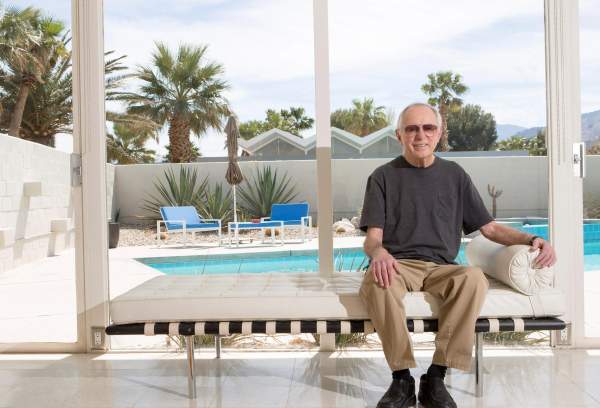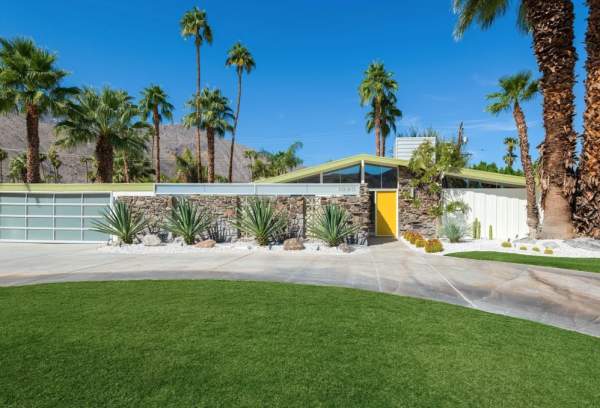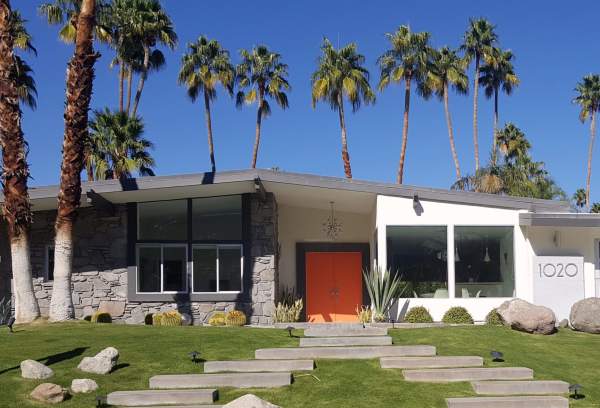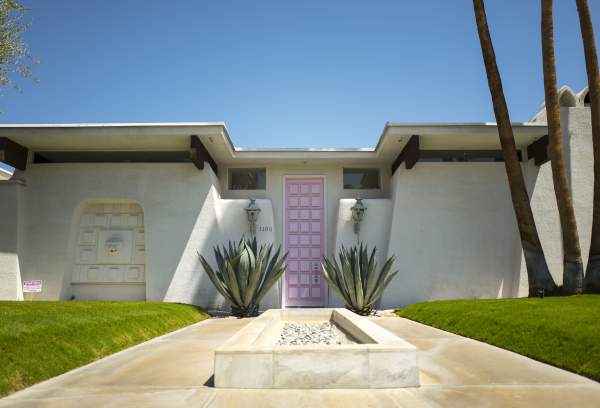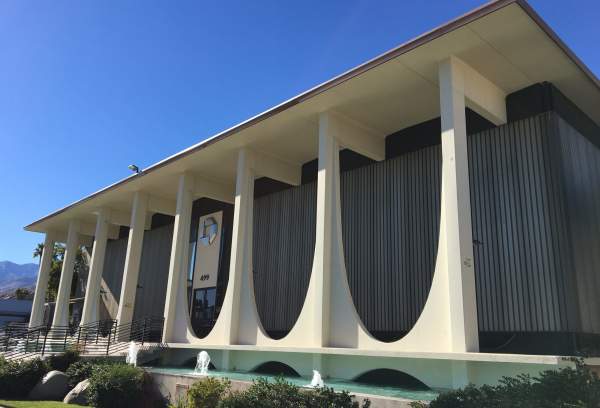Albert Frey is one of the principal architects who helped shape the overall design of Palm Springs, which we have come to love today. He was born in Zurich, Switzerland, in 1903. After completing his studies in architecture, he took a position in Paris at the office of Le Corbusier, working under a student visa. Le Corbusier was also Swiss-born and would become an internationally recognized architect and designer in the modern movement. When the work in Paris eventually declined, Frey resigned. When his American visa was approved, he headed to New York, where he interviewed with architect Lawrence Kocher, also the managing editor of Architectural Record. He was offered a position for a salary of $25 a week, which was considered good money in the Depression years.
Frey + Kocher
Frey and Kocher began designing the Aluminaire House in 1930. The metal and glass structure was built in less than 10 days for the 1931 Architectural League Show in New York. This house was sheathed entirely in ribbed aluminum over an insulation board covered with building paper. All window sashes, doors, and frames were steel. Built-in furniture provided efficient use of space. The expo opened on April 18, 1931, for one week. Over 100,000 people toured. Henry Russel Hitchcock and Philip Johnson included the house in the Museum of Modern Art, “Modern Architecture: An International Exhibition” in 1932. Traveling to fourteen locations in the United States over a two-year period, the exhibition significantly contributed to the development of the American modern movement.
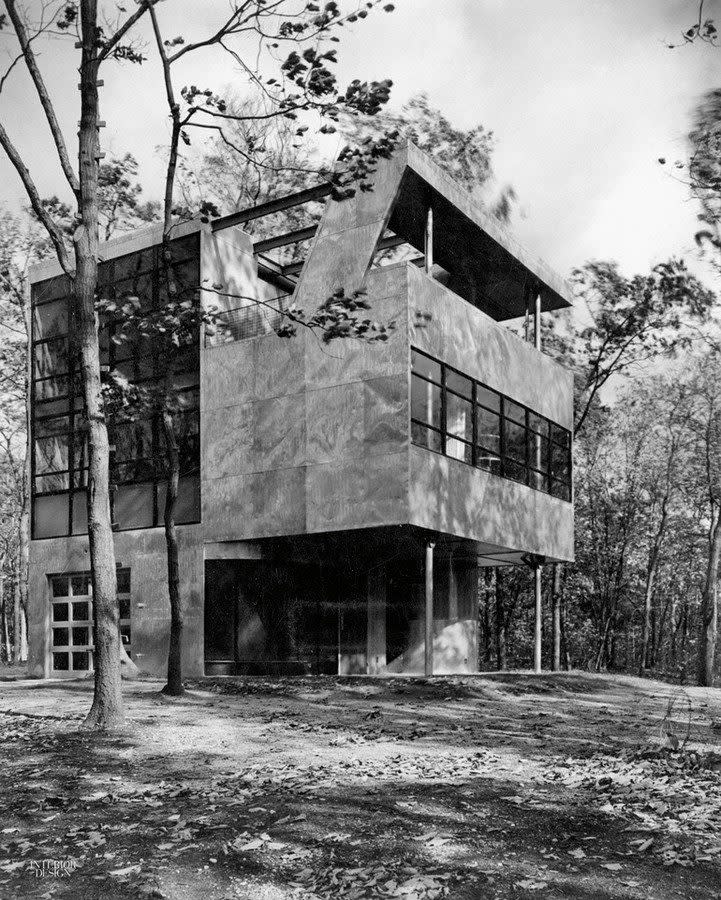
Read More about the Aluminaire House
One of the commissions that changed his life came in the summer of 1934. It was an office/apartment dual-use building on Palm Canyon for Kocher's brother, Dr. J. J. Kocher of Palm Springs. Frey visited Palm Springs for the first time and fell in love with the desert. The building was the beginning of what would be known as the “desert modernism.” After the project, there was no work for him in New York, so from 1935 to 1937, Frey stayed in Palm Springs and worked with John Porter Clark under the firm name of Van Pelt and Lind Architects, as both were not yet licensed in California. In 1937, Frey briefly returned to work at the Museum of Modern Art in New York. Then, in 1939, he returned to Palm Springs to resume his collaboration with Clark, which continued for nearly 20 more years. Frey and his wife divorced in 1945, and neither remarried.
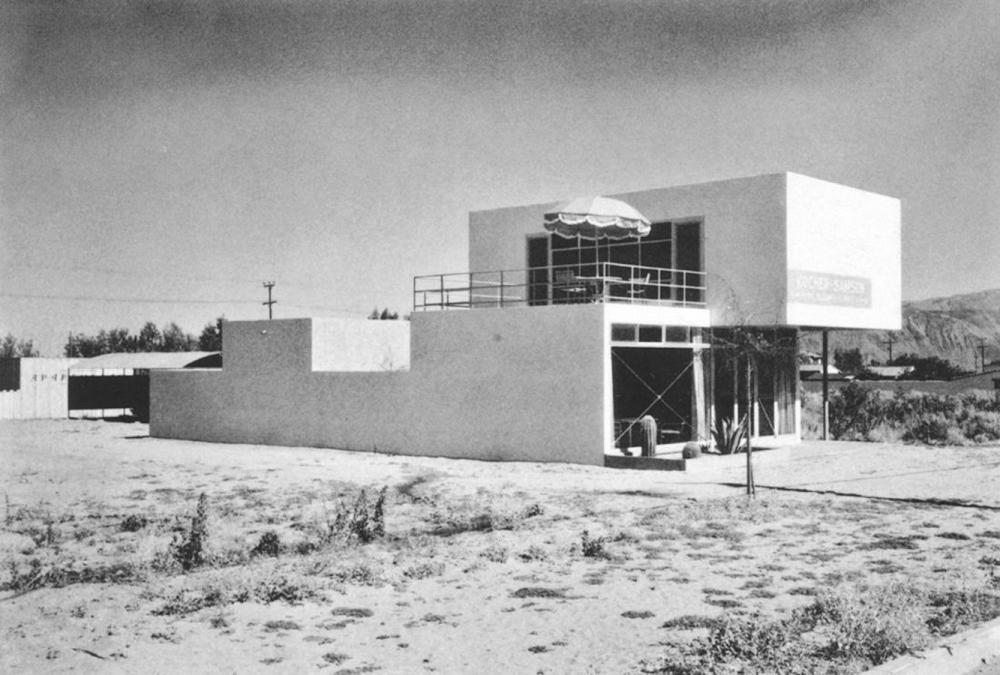
Albert Frey, Sr. arrived in the Village in September 1948 to make his home with his son. They lived at 1150 Paseo El Mirador. He took an active part in the work of the local art colony almost instantly. Unfortunately, he passed away from pneumonia shortly after his arrival.
From Partnerships to Solo Work
His business partner, John Porter Clark, who had much to do with the building up of the Village since the early 1930s, had been commissioned as a First Lieutenant in the Army Engineering Corps in 1942 and was stationed with the Army Air Corps at Minter Field, near Bakersfield. Albert took charge from their office at 869 North Palm Canyon Drive during his absence. During this time, he also joined the Palm Springs Desert Museum board. At the end of 1956, Clark left the firm to establish a solo practice.
Albert remained interested in various building types, mainly residential, with which he was very familiar. He collaborated with Chambers. However, he decided to go solo when the Tramway Gas Station was completed under their partnership.
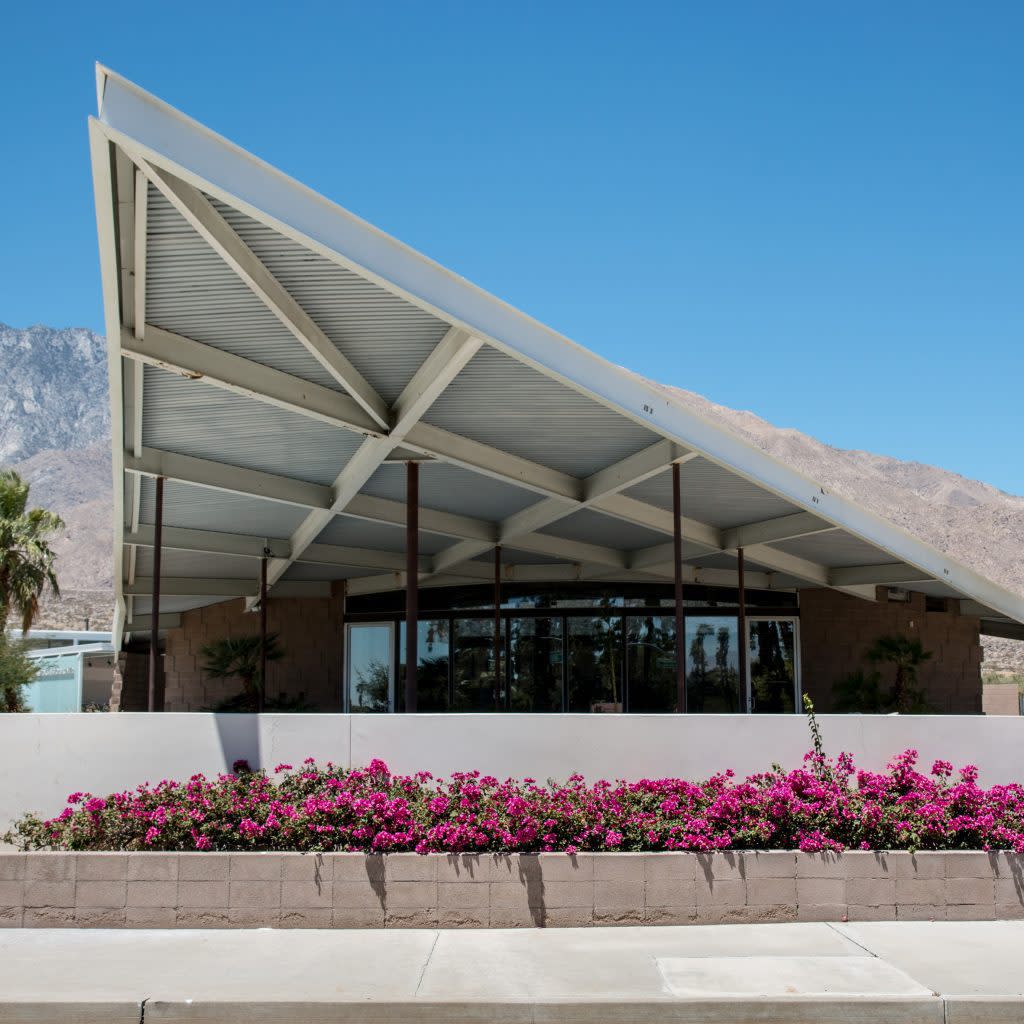
Tramway Gas Station, aka the Palm Springs Visitor Center (1965) - 2901 N Palm Canyon Dr
You can read more about the Visitor Center.
From 1966 to his retirement in the 1980s, Frey worked alone. Frey’s commissions later in his career consisted primarily of additions and alterations to houses in Smoketree Ranch. He died in Palm Springs in 1998 at the age of 95 and is buried at Welwood Murray Cemetery.
Albert Frey's Works
Frey personified the same qualities found in his buildings: elegant, simple, streamlined, and clever. Even his wardrobe demonstrated a sensual notion of esthetic frugality. He wore shirts, trousers, and socks in a strictly limited white, powder blue, salmon, pale yellow, and beige palette. For Frey, Modernism was not merely a stylistic issue but a philosophical way of life.
Kocher - Sampson Building (1934) - 766 North Palm Canyon
The Kellogg Studio (1936) - 321 West Vereda Sur. Altered.
The Mason House (1937) - 448 Cottonwood Road - Altered and became condominiums.
The Chaney Apartments (1939) - 275 East Tamarisk Road
Frey House I - (1940, demolished)
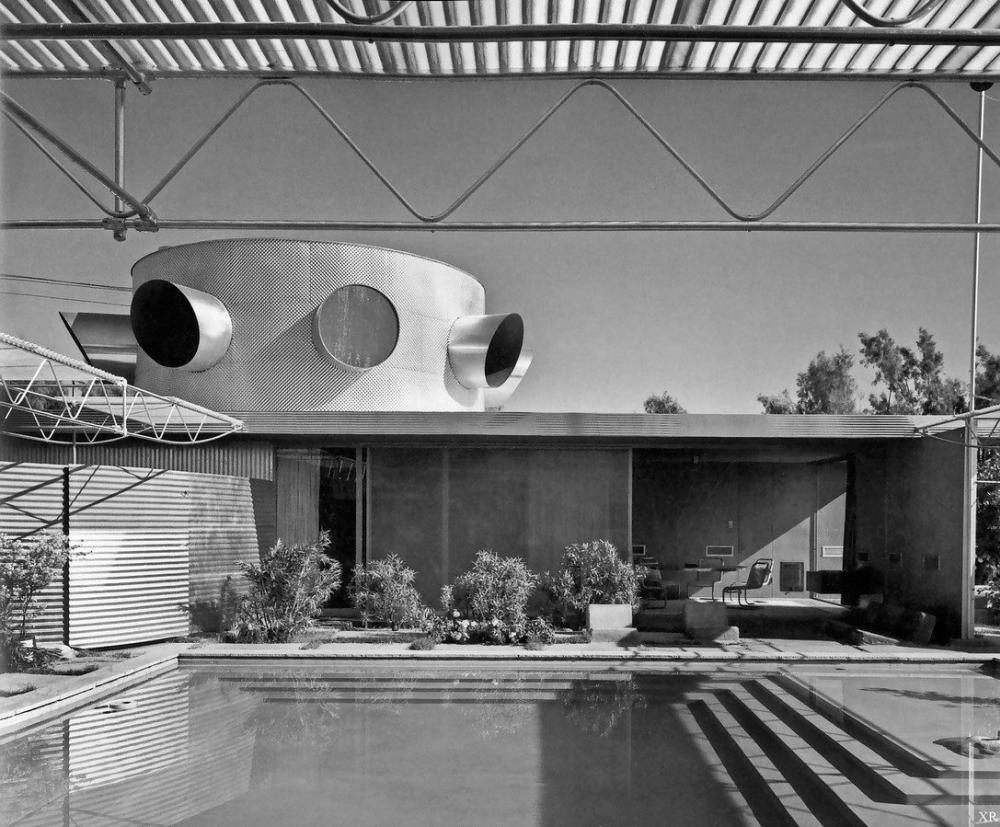
The Julian Sieroty House (1941) - 695 East Vereda Sur - Restored by Frey in 1989.
The Racquet Club Bungalows (1945) - 2743 North Indian Avenue
Villa Hermosa apartments (1946) - 155 Hermosa Place
The Colgan Apartments (1946) - 269 Chuckwalla Road - Name changed to Villa Orleans. 15 units.
The Raymond Loewy House (1946) - 600 West Panorama Road - Minor alterations.
Featured in LIFE Magazine, the home was built for industrial designer Raymond Loewy as his winter house in the Little Tuscany neighborhood. Loewy had designed logos for Coca-Cola, Frigidaire, Exxon, Lucky Strike, and Air Force One. Frey convinced Loewy that he could design a house that took advantage of an extensive boulder pile on the property that had been pushed there while constructing an adjacent road. It was designed in an L-shape with bedrooms and a bathroom on one wing and the living room, servants’ quarters, and kitchen on the other. Frey incorporated an unusual feature, featuring a large boulder and a portion of the swimming pool, into the space.
Richard Neutra was building the iconic Kaufmann House in the same year and in essentially the same neighborhood. They shared the same contractor.

The Andrew and Anna Jergens House, aka Graceland West (1946), is at 845 West Chino Canyon. It was sold in 1960 to Ray Kroc, the McDonald's founder, and then in 1970 to Elvis Presley, who expanded it and recorded nine songs in the house.
Bel Vista Residence (1946) - 1164 North Calle Rolph
Sun View Estates Home (1950) is adjacent to Deep Well Ranch Estates just east of Sagebrush Road on South Calle Rolph.
Palm Springs City Hall (1952 - 1957) - 3200 E Tahquitz Canyon Way - Palm Springs City Hall was one of Clark, Frey, and Chambers’ most important public buildings. Although a collaborative effort with the local architectural firm of Williams and Williams, the building’s initial phase was primarily the design work of John Porter Clark and Albert Frey. An unusual detail of the council chamber is its corner treatment, which consists of projecting concrete blocks cut diagonally at every other paired row, which allows the blocks to cast light and shadow.
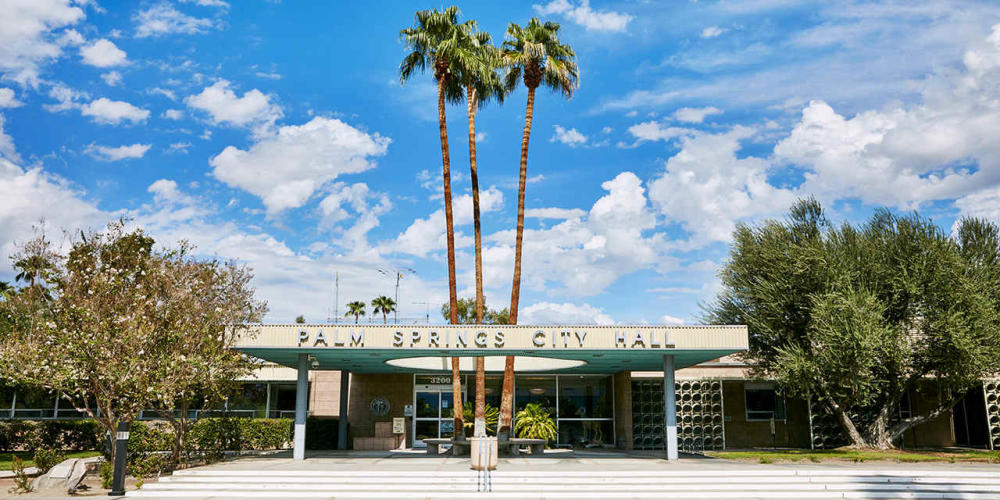
The Laura Carey House, aka the Carey-Pirozzi House (1956) - 651 West Via Escuela
The Frelinghuysen House (1959)—707 Panorama Road—There were alterations and then a restoration after 2000.
The Monkey Tree Hotel (1960) - 2388 E Racquet Club Rd
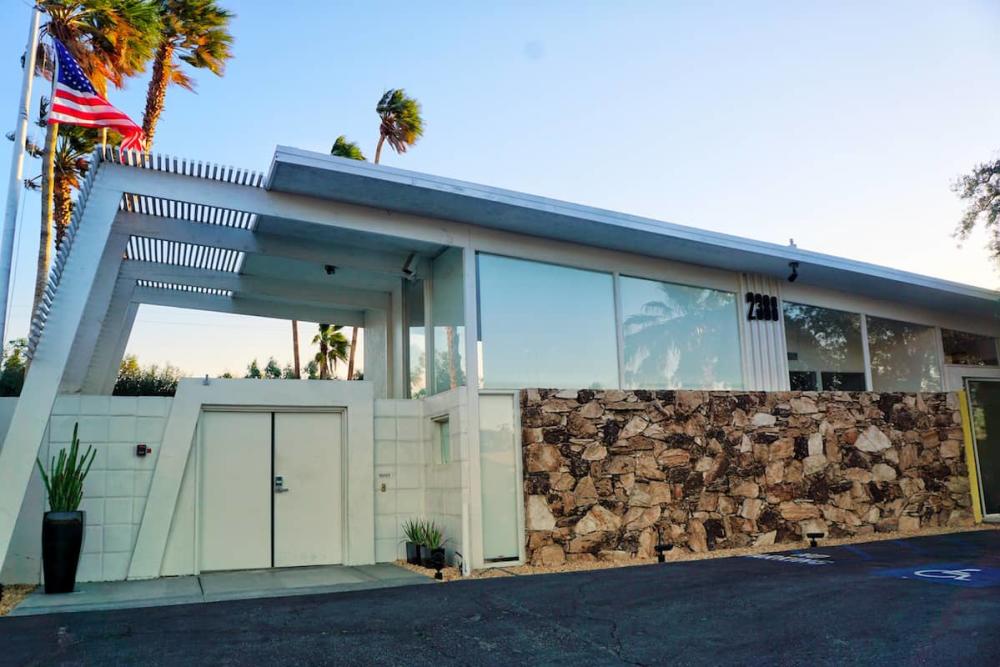
Palm Springs Aerial Tramway Valley Station (1963) Palm Springs Aerial Tramway was a Frey and Chambers joint venture with Williams, Williams & Williams. John Porter Clark served as the coordinating architect. With E. Stewart Williams as lead designer, the Williams team was responsible for the upper tramway station evocative of a mountain chalet. The Tramway Valley station was designed by Frey using a New England-style covered bridge as its inspiration. The challenging location chosen for the valley station was a dry stream that could become a raging river at certain times of the year. Hence, Frey’s decision to straddle the stream with a building utilizing a structural truss design. He inserted glass between the trusses to provide spectacular views looking up the mountain.

The Hugo Steinmeyer House (1962) - 318 Pablo Drive
Residence (1964) - 318 West Pablo Dr
Frey House II (1964) - 686 Palisades Drive - Learn more about this beautiful architectural gem and Book Your Visit.
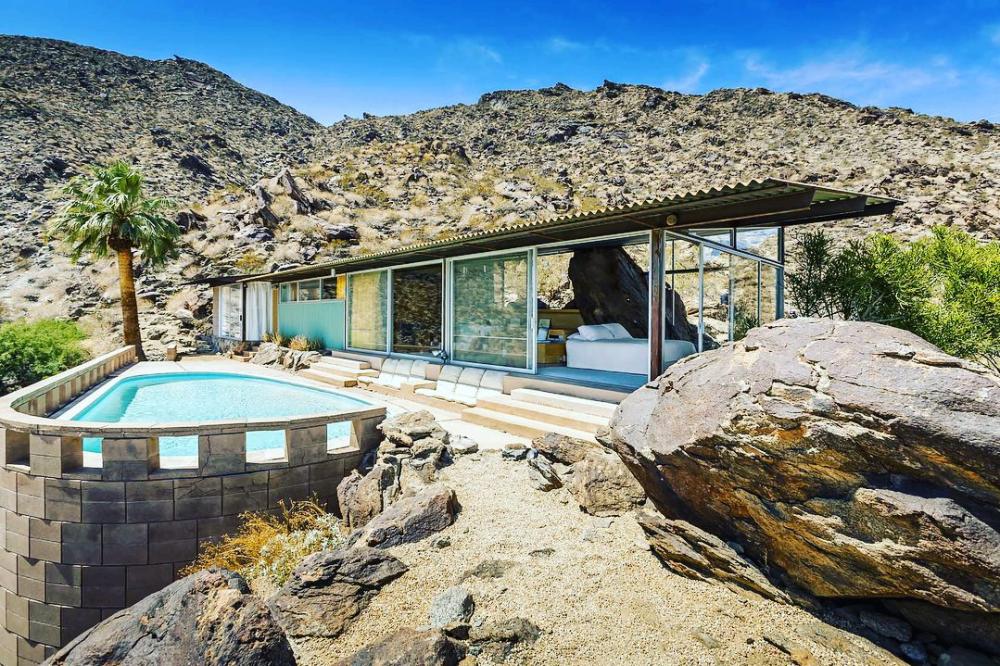
Frey House II

Palm Springs Architect – Charles Du Bois
Palm Springs Architect – E. Stewart Williams
Architects Who Built Palm Springs: Howard Lapham
Architects Who Built Palm Springs: Donald Wexler
- 7 min read
In 1950, Donald Wexler (1926–2015) graduated from the University…
Palm Springs Modernism Week - October
- 6 min read
Four Days of Must-See Tours and Events October 16 - 19, 2025 Tickets on…
Midcentury Architecture Self-Guided Tour
- 25 min read
Learn more about Palm Springs Architecture on this Self-Guided Tour…
Palm Springs Self-Guided Colored Door Tour
- 8 min read
The colored doors of Palm Springs are delightful and popular. This…
Discover Palm Springs Through the Eyes of Architectural Historian Michael Stern
- 5 min read
Conventionally, buildings are constructed to shield us from the…
